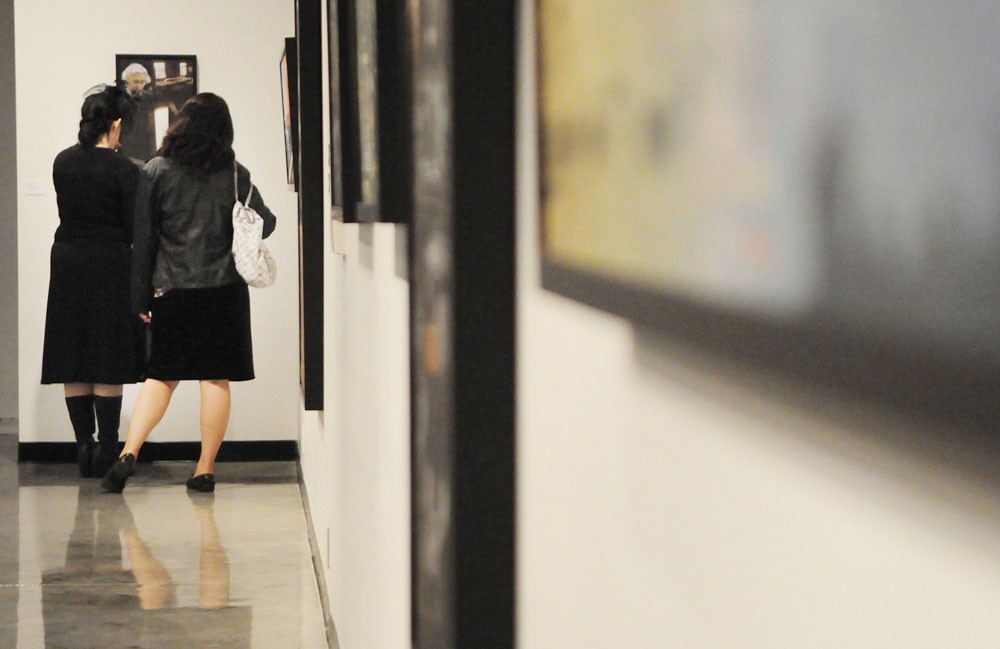Last March, Stephen Feinstein and David Feinberg were eating lunch while planning the Voice to Vision art exhibit . When Feinberg got an e-mail the next day informing him that Feinstein had died suddenly, he was stunned. âÄúI said this is a joke, itâÄôs gotta be a joke âÄî IâÄôm working on the stuff we talked about while we ate lunch,âÄù Feinberg said. Feinberg, a University art professor and director of the Voice to Vision exhibit, said the show was dedicated to Feinstein, former director of the Center for Holocaust and Genocide Studies. Now on display at the Regis Center for Art , Voice to Vision allowed artists to collaborate with genocide survivors and tell their stories through paintings, drawings and mixed media. Feinstein and Feinberg had known each other through their mutual interest in collecting antique toys and trains, Feinberg said, but it was FeinsteinâÄôs enthusiasm for Voice to Vision that brought them together. âÄúI called him and said, âÄòI have this idea for a project,âÄô and without me even explaining it he said, âÄòLetâÄôs do it,âÄô âÄù Feinberg said. He added that the project, which has been in the works for six years, evolved from his own work. Feinberg said people were âÄústunnedâÄù by a piece he showed at a faculty art show years ago that depicted a woman being hanged by the Nazis. This made him realize that art can remind people to keep these issues on the table, he said. He began working with genocide survivors because they âÄúwere still alive and still had a story,âÄù he said. Faculty, art students, community artists, musicians, videographers and genocide survivors participated in the project. âÄúWe collaborated with many different disciplines and, most importantly, generations,âÄù he said. For one of FeinbergâÄôs mixed media pieces, âÄúJourney,âÄù Holocaust survivors were asked to choose objects that reminded them of experiences they had before the Third Reich and after the end of World War II. Artists worked with them to incorporate the objects into the piece. Feinberg emphasized that the goal of the exhibit was to convey the experiences of survivors in a way that would evoke an emotional response in viewers. âÄúUnless we can engage people emotionally about these issues of genocide, there is no hope for the future,âÄù said Ellen Kennedy , interim director of the Center for Holocaust and Genocide Studies. People canâÄôt feel the experiences of the survivors just through recitations of facts, she added. The work of guest artists Aviel Goodman, Diane Goodman and Esther Malabel was also featured. Goodman created a photo montage for each survivor he worked with. He said he hopes to evoke in viewers the feeling of survivorsâÄô experiences. âÄúThe unconscious part of our mind works visually âÄî itâÄôs a way to access peopleâÄôs emotional lives,âÄù he said. Stacey Holloway , a graduate sculpture student, said she came to the show âÄúto get that feeling about how this happened, how these people felt.âÄù Feinberg said he wanted the people who see the work to become extensions of the survivors, recalling FeinsteinâÄôs concern that their experiences are âÄújust footnotes that get smaller and smaller as generations go by, until they disappear from the text entirely.âÄù He said he wants to see the opposite happen so that these issues stay on the table and get talked about. And he said this happens through art âÄî âÄúOneâÄôs interpretation of whatâÄôs wrong and how to make it right.âÄù











